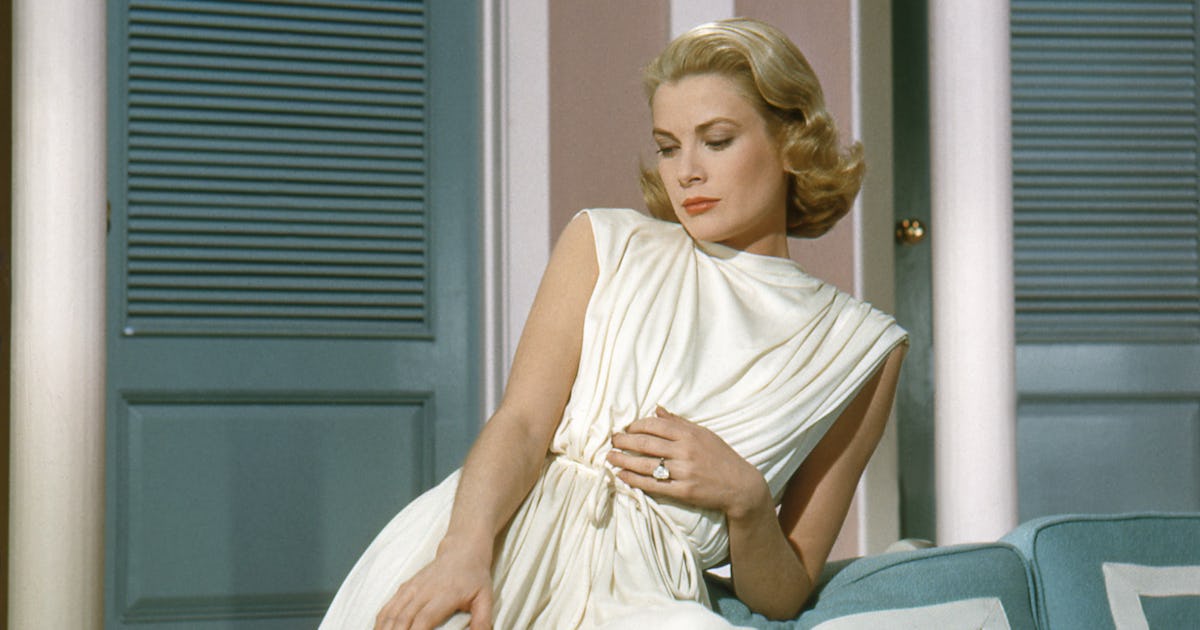In the final gallery of the new Cartier exhibition at London’s Victoria and Albert Museum, there’s a brilliant display of 18 tiaras, including a never-before-shown opal model commissioned by the Marchioness of Hartington and an Art Deco diamond and platinum halo worn by Begum Aga Khan III. One particular piece, however, takes pride of place in a mist-filled alcove just before the entrance: a gold and silver scroll style highlighting more than 1,048 glittering diamonds. It’s the so-called Rihanna tiara, commissioned in 1902 for the Countess of Essex and later worn by Prime Minister Winston Churchill’s wife to the coronation of Queen Elizabeth II in 1953—before Queen RiRi famously modeled it on W’s September 2016 cover.
In the Steven Klein-lensed editorial, Rihanna paired the antique tiara with jewel lips and Klimt-like golden tears; an openwork platinum and diamond collar created by Cartier four years after the tiara for Washington heiress Mary Scott Townsend completed the look. Now, for the first time, Cartier is exhibiting both Garland Style pieces together in London. “We wanted to evoke that powerful image of Rihanna wearing the pieces together in this very futuristic, diva-esque style,” says exhibition cocurator Helen Molesworth. “It’s this brilliant reinvention of how to wear antique jewels in a modern way that feels very Cartier.”
Divided into three main sections that explore Cartier’s history, savoir faire, and legacy, the exhibition presents the French jeweler founded in Paris in 1847 as the first modern jewelry maison to understand the power of precious gems—not just as symbols of power for the aristocracy, but as a nascent sort of fashion capital for new classes of tastemakers, from socialites to Hollywood royalty. “I wanted to talk about the personal, human side of the story as well as the beauty of the jewels and objects,” Molesworth explains.

Featuring more than 350 pieces of jewelry, watches, and other precious objects, the exhibition tells how the founder’s three sons, Louis, Pierre, and Jacques Cartier established outposts in London and New York in the early 20th century, all the while developing client relationships that spanned the globe, from Indian maharanis to American society hostesses. Louis married an heiress to the House of Worth, and set up an atelier in the same building where the oldest Paris couture house had its London salon. “That was a great client-access move,” Molesworth notes. “Now, these wonderful rich ladies who were buying couture were also buying the jewelry.”
Later, at the 1925 International Exhibition of Modern Decorative and Industrial Arts—the Paris design fair that launched Art Deco—Cartier positioned itself beside fashion designers in the Pavillion of Elegance, rather than in the jewelry area. The V&A’s presentation highlights the central stone from the Exposition’s showstopping Bérénice necklace, a long strand designed to drape across the shoulders and down the back featuring a 141.13-carat Mughal-carved Colombian emerald. It was reset as a brooch the following year, and in 2012, was reimagined once again on a tiara for Hong Kong entrepreneur Pansy Ho.

There are many such priceless jewels on loan for the exhibition, like a 487-carat Sri Lankan sapphire from the Qatar Museums that was the largest in the world when it entered the collection of Marie of Romania in 1921—and still ranks among the top five. There is also the Williamson diamond from the Royal Collection, a rare pink stone mounted on a brooch for Queen Elizabeth II in 1953 by Cartier designer Frederick Mew. The V&A, which houses Mew’s archive, has reunited the piece with the original sketches on which the Queen marked “approved.”
The Monaco Princely Palace Collection even loaned Grace Kelly’s step-cut diamond engagement ring that she wore in High Society (1956), her last film before she married Prince Rainier III. But one of the most instantly recognizable pieces isn’t quite as precious: the Toussaint necklace donned by Anne Hathaway in the 2018 heist-comedy Ocean’s 8. In this case, it’s a cubic zirconia reproduction of an exceptional colored diamond necklace created in 1934 for the Maharaja of Nawanagar, featuring large pink, blue, and green stones with a perfect white 136.25-carat diamond at the center that has been lost to time.

